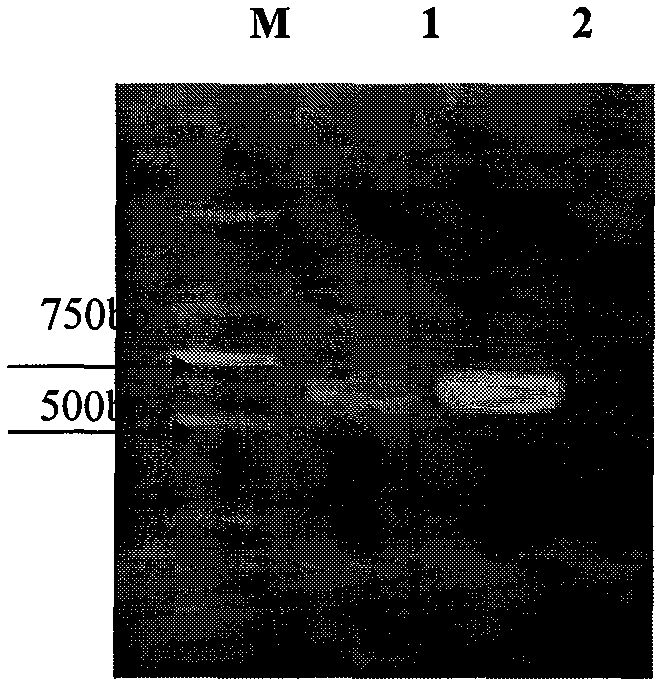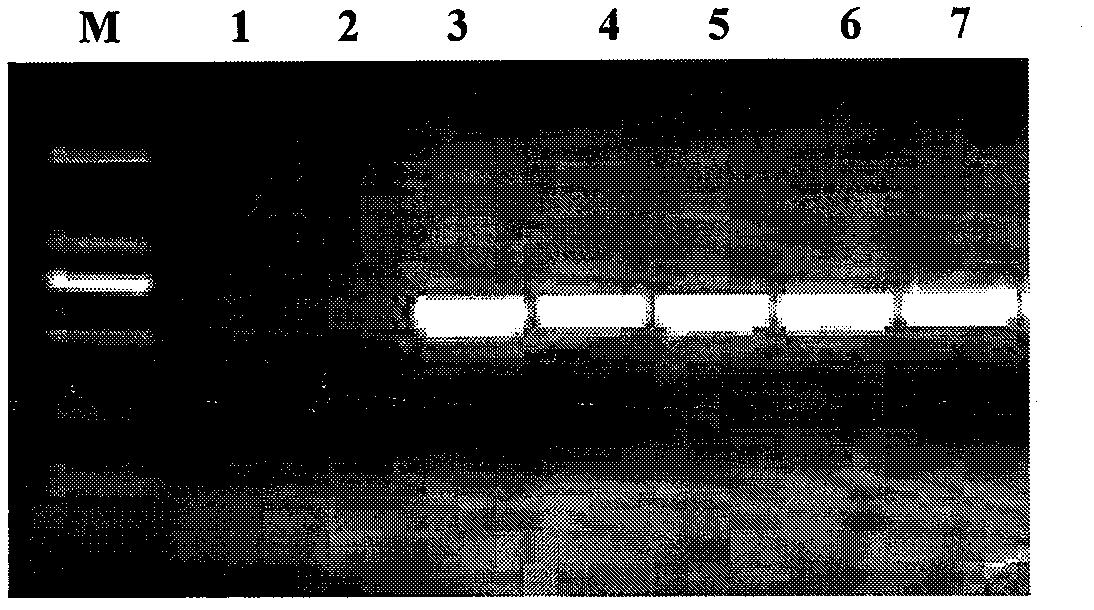Super-xerophyte eremosparton songoricum DREB transcription factor EsDREB and encoding gene and application
A technology of transcription factors and genes, applied in the field of plant genetic engineering
- Summary
- Abstract
- Description
- Claims
- Application Information
AI Technical Summary
Problems solved by technology
Method used
Image
Examples
Embodiment 1
[0039] Example 1: Cloning of DREB transcription factor EsDREB in Junggar Leafless Bean
[0040] Procurement of plant material:
[0041] The initial plant materials in this experiment were two-week-old Junggar leafless bean seedlings germinated in an indoor light incubator. The Junggar leafless bean seeds were treated with 98% sulfuric acid for 10-15 minutes before sowing, rinsed with water for 5 times, and sown in In a glass petri dish with two layers of filter paper, the temperature is 25°C, 12h / d light culture, distilled water is added every other day, the seedlings are harvested two weeks later and simulated drought stress with 20% polyethylene glycol 6000, and the leafless bean seedlings are treated, treatment 4 Hours later, rinse the plant material with distilled water and immediately freeze it in liquid nitrogen, and then transfer it to a -80°C ultra-low temperature refrigerator for storage;
[0042] Extraction and reverse transcription of total RNA from Junggar leafles...
Embodiment 2
[0070] Example 2: Verification of the transcriptional activation activity of EsDREB transcription factor by yeast one-hybrid method
[0071] The yeast strain used in this experiment is the AH109 strain containing LACZ and HIS double reporter genes preserved in our laboratory, and the positive control plasmid pbridge-AtDREB was cloned and preserved by our laboratory in the early stage; the specific operation is carried out according to the following steps:
[0072] Construction of the EsDREB vector fused with the binding domain (BD):
[0073] Design primers with SalI and PstI restriction sites at the start codon and stop codon of the deduced reading frame of the cloned gene respectively (such as the Y-F and Y-R primers in the above table, the restriction site sequences in the primers are underlined out), then use the plasmid of the EsDREB gene constructed on the pMD18-T carrier as a template to amplify, carry out double digestion and ligation of the recovered PCR amplification ...
Embodiment 3
[0079] Example 3: Analysis of subcellular localization of EsDREB transcription factors
[0080] Firstly design the primer pair Sub-F and Sub-R (see the above table, the sequence of the restriction site is underlined) without a stop codon without a restriction site, and use the EsDREB gene that has been constructed into pMD19-T- The plasmid was amplified as a template, and the PCR product was recovered and identified by sequencing. At the same time, the target fragment was cut with Bam HI and Sal I and pBI221 was empty, recovered, ligated, transformed, screened, and the fusion expression vector pBI221-GFP-EsDREB was constructed. Using the empty pBI221-GFP as a control, the onion epidermal cells were bombarded by gene gun method, cultured at 28°C for 24 hours, and observed by fluorescence microscope. The identified fusion expression vector pBI221-GFP-EsDREB was transformed into onion epidermal cells by gene gun transformation method , and an empty pBI221-GFP vector was used as a...
PUM
 Login to View More
Login to View More Abstract
Description
Claims
Application Information
 Login to View More
Login to View More - Generate Ideas
- Intellectual Property
- Life Sciences
- Materials
- Tech Scout
- Unparalleled Data Quality
- Higher Quality Content
- 60% Fewer Hallucinations
Browse by: Latest US Patents, China's latest patents, Technical Efficacy Thesaurus, Application Domain, Technology Topic, Popular Technical Reports.
© 2025 PatSnap. All rights reserved.Legal|Privacy policy|Modern Slavery Act Transparency Statement|Sitemap|About US| Contact US: help@patsnap.com



